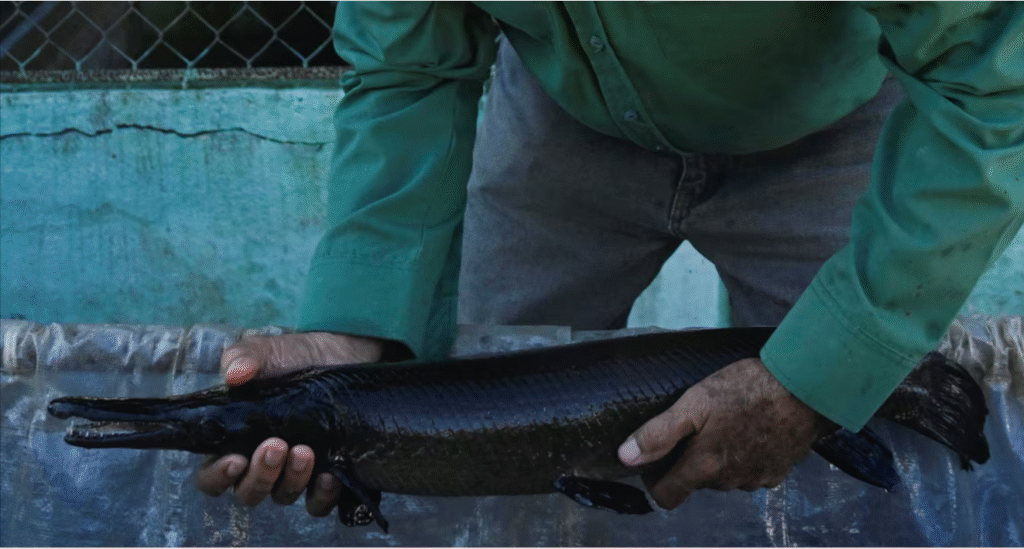CIENAGA DE ZAPATA, Cuba (Reuters) — Buzz, buzz, slap!
This mosquito-ridden lagoon deep in the Zapata Swamp, the Caribbean’s largest intact wetland, is ground-zero for a humble but dedicated restoration effort that aims to save the manjuari, or Cuban gar, from extinction.
“It`s a jewel among Cuban fishes,” said park biologist Andres Hurtado as he tromped through a mangrove forest and fended off a descending swarm of mosquitoes.
“They`re a biological relic that has lived 140 or 150 million years and only now is at critical risk of extinction.”
The garfish – long, slender, its snout filled with sharp teeth, is considered “critically endangered,” earning it a spot on the International Union for Conservation of Nature (IUCN) red list since 2020.
Centuries of exploitation, habitat loss and the 1999 introduction of the African Walking Catfish, a voracious invasive species that has ravaged the once pristine swamp, are culprits in its sudden and precipitous decline.
Hurtado’s answer to these challenges began at a hatchery near the swamp. There, his team devised a method to reproduce the finicky manjuari and produce the food necessary to rear them before releasing them into the wild to bolster the swamp’s ailing population.
Isolation, mosquitoes, shortages of supplies and the fish`s reclusive habits make it difficult, if not impossible, to precisely gauge the project’s progress.
The young fish are about the size of a small pencil. Dark and camouflaged, they hide among impenetrable tangles of mangrove roots and are quickly lost upon release.
There are signs the project may be doing some good, scientists say.
“Local fishermen tell us the manjuari are here,” said Eduardo Abreu, an administrator at the Cienaga de Zapata National Park.
“Perhaps they are not as abundant as in the past, but they are here, and there is an established population.”
By REUTERS
eporting by Alien Fernandez, writing by Dave Sherwood; Editing by David Gregorio
Our Standards: The Thomson Reuters Trust Principles.

